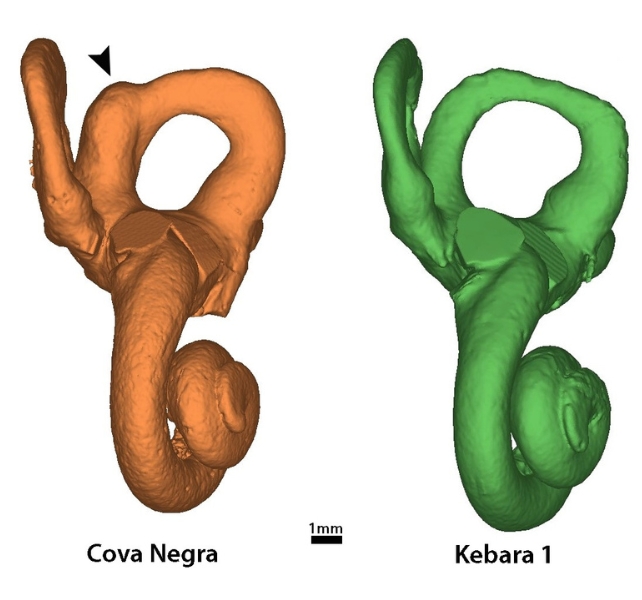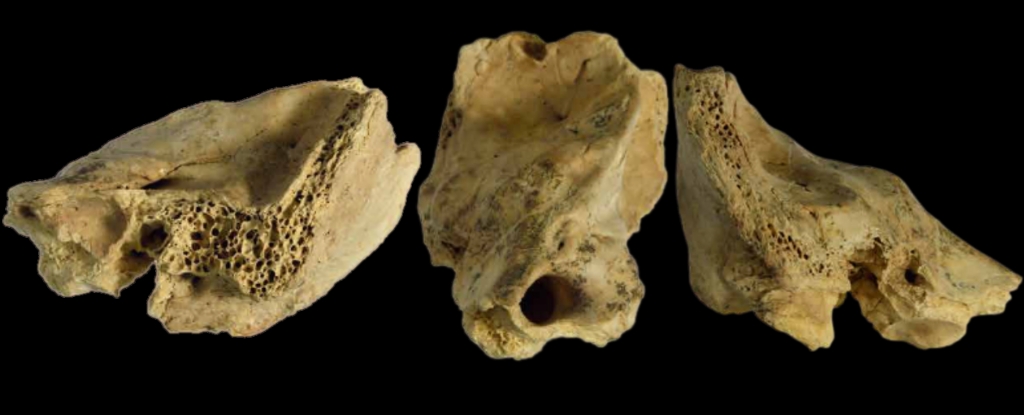The discovery of a Neanderthal child with serious health problems suggestive of Down syndrome has sparked debate about the origins of social healthcare in our species. The child’s survival to at least age six despite severe hearing loss and balance problems demonstrates the complexity of social care among our closest evolutionary relatives, Neanderthals (Homo neanderthalensis), a team of researchers from Spain says in a new study. ).
A child’s survival depended on more support than the mother could provide; This suggests the help of a broader group to challenge the idea that prehistoric care was given only to close relatives or those who could reciprocate. It has long been known that Neanderthals cared for the sick and injured in their communities, but the reasons for this behavior are debated.
Fossils of children with diseases that required help from other members of the group to survive provide a rare opportunity to study this issue further. Fossil CN-46700 is a temporal bone from a series of Neanderthal remains excavated in the Cova Negra cave in Spain in 1989, where this species lived between 273,000 and 146,000 years ago. The researchers used microcomputed tomography to create a 3D model of the original fossil for analysis.
The analysis showed that CN-46700 had characteristics typical of Neanderthals and developmental features that indicate the child was older than six years old. They also found signs of health problems, such as shrinkage of the pinna and abnormalities in the shortest ear canal, that can cause hearing loss and severe dizziness.
“The only syndrome compatible with all malformations in CN-46700 is Down syndrome,” write Universitat Alcalá paleoanthropologist Mercedes Conde-Valverde and colleagues. “Therefore, all available evidence indicates that individual CN-46700 likely had Down syndrome, which is the most common genetic disorder in humans and is also present in great apes.”
Living to the age of six is a remarkable achievement: none of the three known Down syndrome children born with Down syndrome in the Iron Age lived more than 16 months. Other fossils of inner ear abnormalities that affect hearing and balance are in adults, and their symptoms are often the result of infections rather than diseases present at birth.
Down syndrome is usually caused by a random error in cell division during egg or sperm formation, resulting in an extra copy (or partial copy) of chromosome 21 in body cells. It affects development and increases the risk of many health problems, including heart disease and epilepsy.
In 1900, the average life expectancy for people with Down syndrome was 9 years; today, advances in medicine and social support mean that people in developed countries can live past the age of 60.

Down syndrome often involves disorders that affect growth, physical and cognitive development, and motor skills. Children often experience difficulties in breastfeeding due to delays in walking and speaking, balance and coordination problems that increase the risk of falling, and weak muscle tone. Conde-Valverde and the team wrote that the symptoms experienced by CN-46700 “will include at least severe hearing loss and a marked decrease in the sense of balance and balance.”
Neanderthals had harsh lifestyles, and it is unlikely that a mother could provide a child with Down syndrome with all the necessary care while performing daily tasks. The survival of CN-46700 suggests that our hominin cousin received extensive and sustained support from a larger group, even if the child was unable to provide direct, equivalent reciprocity. This suggests that guardians may have been driven by compassion.
“The presence of this complex social adaptation in both Neanderthals and our species points to a very ancient origin within the genus.” “Homo”, – the authors summarize. The study was published on: Science Developments.
Source: Port Altele
